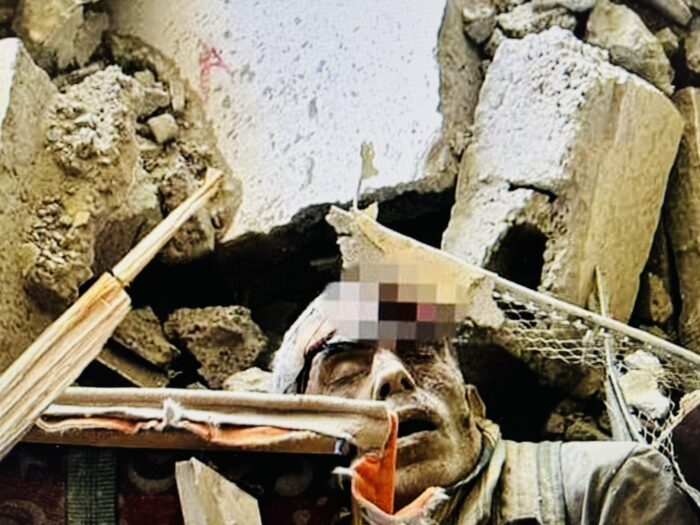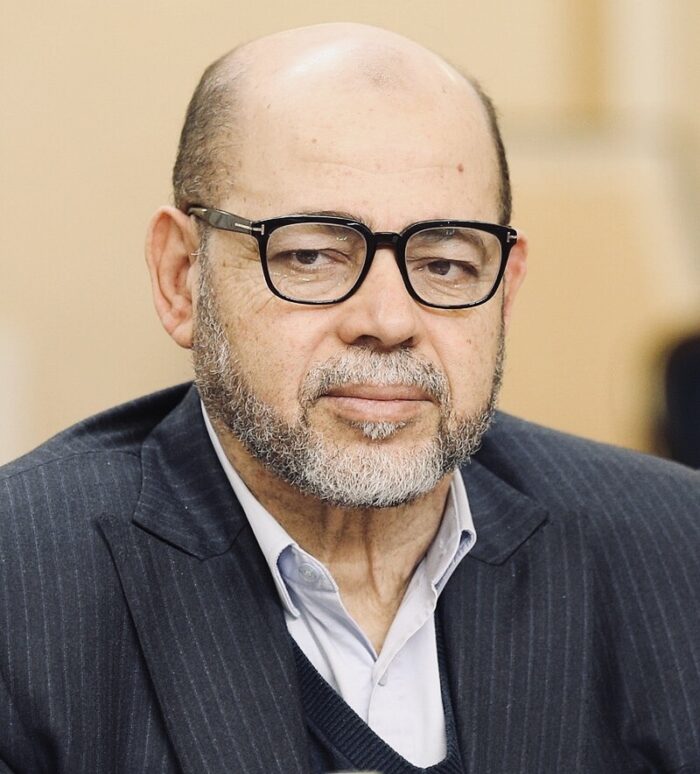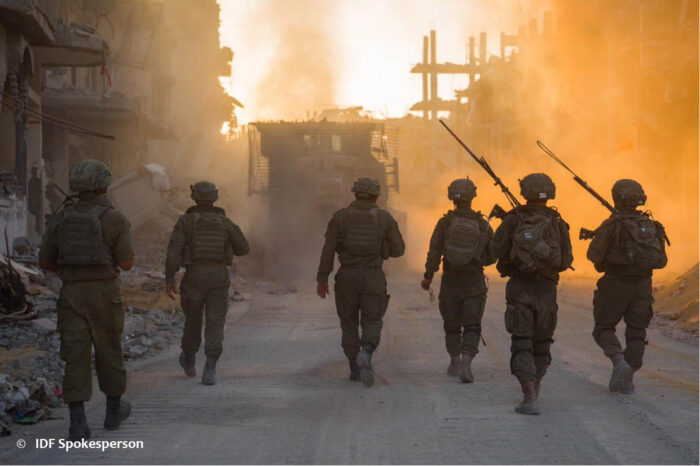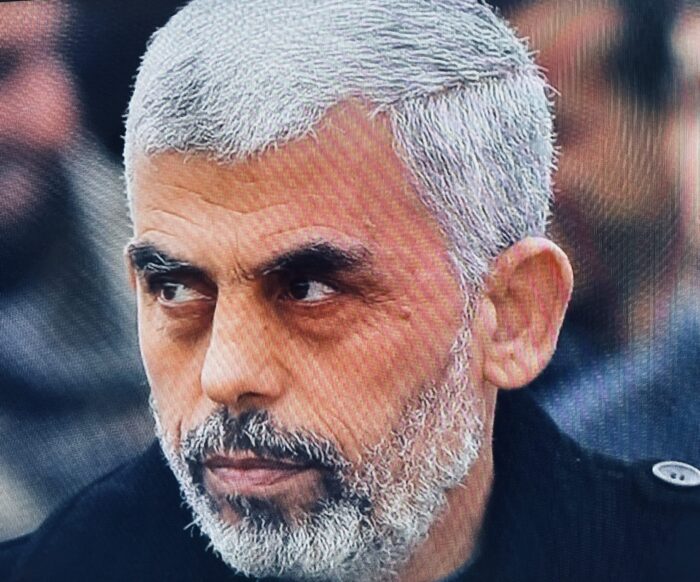Yahya Sinwar, the ruthless mastermind of last year’s October 7 massacre in southern Israel, got his comeuppance on the 377th day of the war he ignited in the Gaza Strip.
On October 16, he was killed by Israeli soldiers in Rafah, the last city in Gaza to be stormed and occupied by Israel. He and two associates died in two separate buildings struck by tank fire and bullets. A drone recorded Sinwar’s final moments.
This was not a targeted assassination, but a fortunate case of happenstance. The soldiers had no advance knowledge that Sinswar, Hamas’ supreme political leader and the most-wanted figure on Israel’s terrorist list, was among the three suspicious figures they randomly spotted.

Sinwar, 61, was the latest in a series of high-ranking Palestinian figures to be violently removed from the scene. This past July, Ismail Haniyeh, his colleague, was assassinated in Tehran as Iran’s incoming president was to be inaugurated. Israel did not claim responsibility, but is widely believed to have carried out the assassination.
Since the outbreak of the war, Israel has decimated Hamas’ leadership and killed many of its commanders, including Mohammed Deif, the head of the Qassem Brigades, the armed wing of Hamas. In addition, 17,000 of its foot soldiers have been killed in battle.
Three major Hamas leaders are still alive and in Israel’s crosshairs: Khaled Mashaal, the object of an Israeli assassination attempt in Jordan in 1997; Khalil al-Hayya, Sinwar’s deputy, and Mousa Abu Marzook, the first chairman of Hamas’ political bureau.

Israel has greatly degraded Hamas’ military capabilities, but has yet to finish it off. Whether its destruction can be accomplished is debatable, but Israel has been forced to mount a succession of clearing operations throughout Gaza in the past few months as Hamas units have regrouped.

Israel also has failed to rescue its remaining hostages. By one estimate, 101 are still held in Gaza, half of whom are presumed to be dead.
In commenting on Sinwar’s death, Prime Minister Benjamin alluded to Israel’s longest war since the 1948 War of Independence.
“The war … is not yet finished,” he said. “It is harsh and it takes a heavy price from us. I want to send from the bottom of my heart my condolences to those who have lost their loved ones. I want to embrace the families of our fallen heroes. Their ultimate sacrifice, including in these very days, brings us closer to victory. As King David said, I will pursue my enemies and destroy them. And I will not turn back until they are wiped out.”
Sinwar’s demise is a tremendous psychological blow to Hamas, but he is not Hamas’ first leader to be assassinated. In 2004, Israel killed its founder, Sheikh Ahmed Yassin, as well as his successor.
In the past, Hamas managed to routinely replace its fallen leaders. But now that Israel controls Gaza and has pledged that Hamas will never rule Gaza again, Hamas finds itself in troubled waters. It is quite probable that Sinwar may indeed have been Gaza’s last Hamas ruler. Sinwar’s brother and presumed successor, Mohammed, is dead man walking.
The son of Palestinian refugees, Sinwar was born in Khan Younis. He joined Hamas, the Islamic Resistance Movement, in 1987, the year it was founded during the first Palestinian uprising. Ironically, Israel encouraged its formation as a counter-weight to the secular Palestine Liberation Organization, led by Yasser Arafat.
In line with Hamas’ national charter, he vehemently opposed Israel’s existence. Yet, during his 22 years in an Israeli prison, he learned Hebrew and immersed himself in the intricacies of Zionism and Israeli society, thereby becoming a formidable opponent of Israel from an intellectual point of view.
He and other Palestinian prisoners were released in 2011 in exchange for Gilad Shalit, an Israeli soldier who was kidnapped in 2006, a year after Israel’s unilateral withdrawal from Gaza.
After Israel’s pullout, Hamas defeated Fatah, the largest faction in the Palestine Liberation Organization, in a legislative election. In 2007, Hamas staged a bloody coup and ousted the Palestinian Authority, which had ruled Gaza since the 1993 Oslo peace process.
During his term of office from 2017 onward, Sinwar established close relations with Iran, Israel’s deadliest enemy, and used scarce resources to build a military machine and an elaborate network of attack and supply tunnels.

Creating a crisis along the Israeli border in 2018 during the so-called March of Return, he encouraged thousands of Palestinians to throw stones and explosives at Israeli soldiers and emboldened them to believe that the “right of return” was imminent.
With Netanyahu’s approval, he permitted hundreds of millions of dollars from Qatar to flow into Gaza to prevent it from slipping into financial insolvency. He also allowed Palestinian laborers to accept Israeli work permits. And at Sinwar’s direction, Hamas declined to intervene in the fourth cross-border Gaza war, which was triggered by Islamic Jihad in 2021.
Sinwar’s cunning strategy was to convince Netanyahu that he preferred calm to chaos. To a great extent, he succeeded in fooling his Israeli adversary that he was a pragmatist.
All the while, he plotted to destroy Israel. Two years ago, he delivered a speech urging Palestinians everywhere, including inside Israel, to “get your cleavers, axes or knives ready.” A week later, a Palestinian terrorist killed three Israelis in axe attack.
Judging by a document Israeli troops found in a tunnel in Khan Younis earlier this year, Sinwar sought to persuade Hezbollah and Iran to join the seminal assault Hamas intended to launch against Israel. Sinwar hoped that this rampage, originally planned for the autumn of 2022, would catapult the plight of the Palestinians into the limelight, sabotage Israel’s growing rapprochement with Saudi Arabia, ignite a regional war, and lead to the “collapse” of Israel.
Iran supported Sinwar’s plan in principle, but the Iranian regime told him it needed time for proper preparations, causing Sinwar to move to attack date to October 7, 2023.
Hezbollah, however, promised to assist Hamas. The day after 3,000 Hamas terrorists attacked Israel, killing roughly 1,200 Israelis and foreigners and kidnapping 251, Hezbollah began firing rockets and drones at Israel in solidarity with Hamas. Hezbollah’s loyalty to Hamas proved to be disastrous, prompting Israel to invade southern Lebanon late last month.
Sinwar’s fierce hatred of Israel and his opposition to a two-state solution immortalized him as a hero of resistance. But outside of rejectionist Palestinian circles, his legacy is unrelentingly grim. In response to the October 7 attacks, Israel has devastated Gaza, leaving it in ruins. Thanks to his policy of cynically using civilian infrastructure and civilians as human shields, Sinwar stands rightfully accused of direct complicity in the deaths of tens of thousands of Palestinian men, women and children.
It is questionable whether Sinwar’s untimely death will hasten the end of the war in Gaza, though the international community is calling for a ceasefire. Israel still has work to do to further degrade Hamas, which has proven to be remarkably resilient.
Netanyahu is sure to come under mounting pressure from the United States and the families of hostages to secure a ceasefire and wrap up this protracted war so they can be released after more than a year in captivity under horrific conditions.
Even if Netanyahu bows to their demands, he will not likely pull Israeli forces out of Gaza completely any time soon, fearing that a power vacuum would enable Hamas to reconstitute itself.
Sinwar is gone, but Hamas is determined to fight to the last man.
